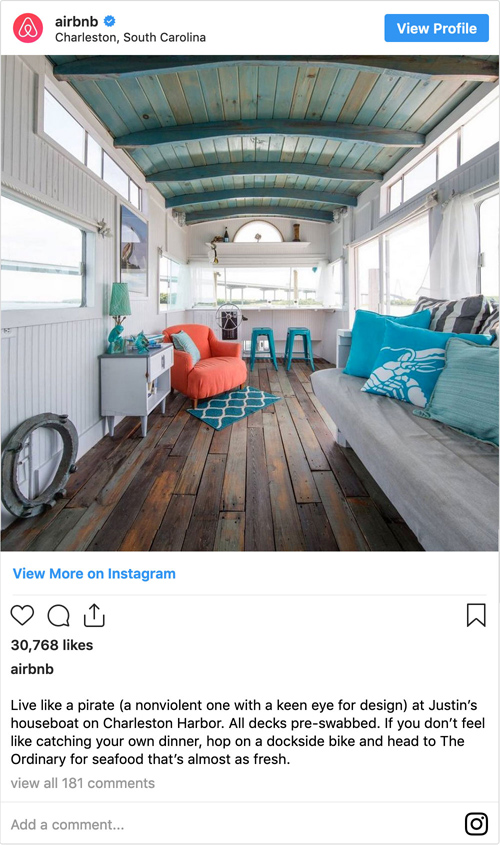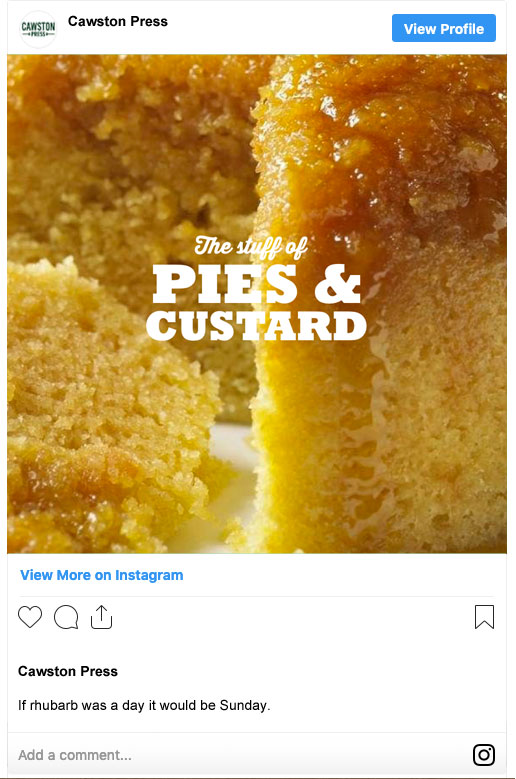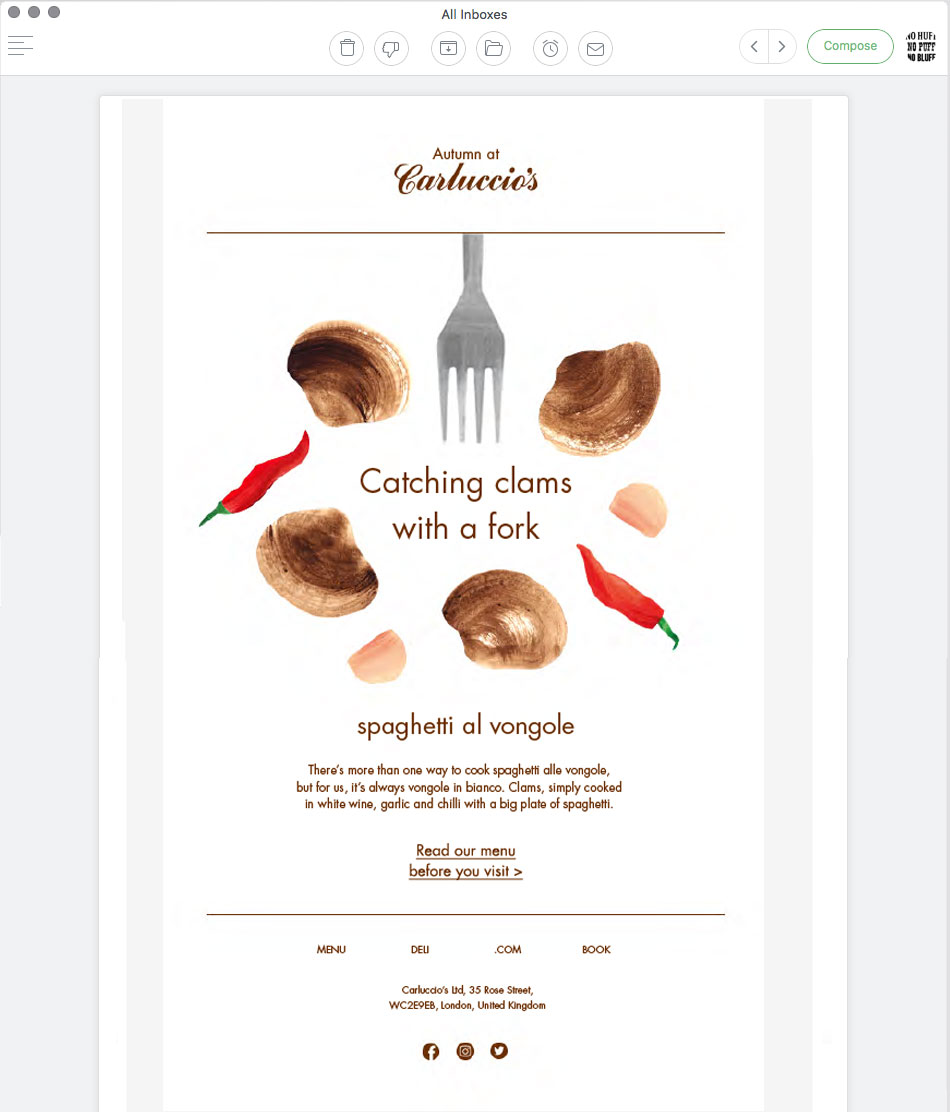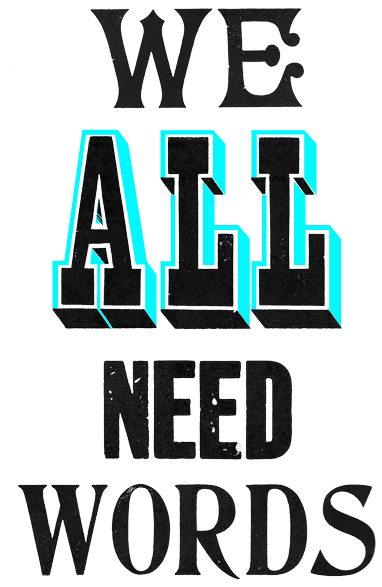Scratch the surface of the internet and you’ll find loads of content about content: what’s hot, what’s not, how to get more likes, reach more ‘influencers’, use more video… But there’s one problem no one really grapples with. Even though there are more people with ‘content’ in their job titles than ever, most content from brands is frothy and flimsy.
Sure, if you’re after art-directed pictures of new seaweed snacks at jaunty angles, bucket loads of ‘good vibes’ or smiley #friyay! posts once a week, you’re fine. But short, sharp, scrollable content? That’s needle in a haystack stuff.
Brands could – and should – do better. Here’s our guide to giving flabby content strategies a good workout.
1. PRETTY PICTURES DON’T MAKE A CONTENT STRATEGY:
PLANNING WHAT TO SAY
Brands aren’t people. But most brands’ strategy for social is to mimic what people do on their own, personal feeds. Neatly composed shots, inspirational quotes… you get the idea. I can show my friends what I had for my dinner, but if a restaurant does the same, it’s just sale-sy nothingness (however nice the crockery in the overhead shot). This shouldn’t pass for a content strategy, yet it’s often brands’ one-and-only plan, stretched thinly over lots of channels and posts. And it’s not what people want:

We make sure a content strategy’s tight. And, like our tone of voice projects, we tackle it by doing it. First we sharpen up the brand’s overall take or stance on things, then we come up with lots of different ways to show it on social and elsewhere. This means it’s never only a content plan that sounds good in theory. We put it to the test. We write a bunch of dummy social posts or the words to go with a photo. If a brand sends out emails, we create a newsletter template (that can run and run), and write the first set of words to go with it. We work like a mini editorial team, coming in to help brands work out what to say, how, where and when to say it. It’s part planning, part features-writing, with a bit of campaign writing thrown in.

2. NOT JUST A CAPTION BY A PRETTY PICTURE: WRITING IT
Good ideas, well-written, made for social, post after post after post – that’s the goal. But social eats content for breakfast, lunch, dinner and every KitKat break in between, so it needs a whole different mindset and way of writing. How can you make content work in different ways? What’s the best way to make posts short and sharp, and to get people’s attention? How do you make sure you don’t run out of headlines by day three?
The end of ‘meh’. Have an opinion, keep it tight.
You need a good angle or hook to make each post or email really tight. This is where a lot of content falls short. Because an angle or, even better, an opinion, stops you coming up with more flimsy nothingness. Infatuation NYC, an online guide to restaurants in the Big Apple, is good at writing mini-angles for every post. And, crucially, it’s clear they haven’t skimped on finding good people: they’ve hired a talented bunch of writers…

Be single-minded (more than you’d think).
Brands that are well set up for content find it easiest of all to keep their stuff single-minded. Airbnb, for example, have an endless supply of great photos and hosts who are keen for publicity. So they hone in on that on Instagram: they hardly ever write about travel in general, or how travel makes you feel or whatever else. They keep their posts tight and don’t go on – there’s no ‘brand noise’.

What would Don Draper do?
This goes against the grain of most of the ‘stories not ads’ advice out there, but we think it’s worth looking at ads to see how they get people’s attention. Things that work well in a square, boiled down to ‘the best x or the best y’, do particularly well. So you can put on your L’Estrange 24-hour trousers and your Allbirds shoes, while sitting on your Casper bed and packing your Away suitcase. These do-one-thing-well businesses are at home in a small square.
When we’re coming up with ways to help brands with their content, we think about a bunch of posts as little ads in themselves (there’s another example over here).

This stuff is hard to do all the time and for every post, because little ads take time and thought, but if you have enough to sprinkle in here and there, people will notice them.
3. KEEPING IT GOING: TESTING IT
Something’s going on. On the one hand brand teams say testing is really important, but – across the board – we’ve found brands use testing as a reason not to change things.
Time and time again, data or ‘best practice’ mean content never gets to the testing stage in the first place (‘no one else does it like that’; ‘oh but SEO means we can’t do that’;‘but we’ve always done it this way’). One brand was worried about adding words because they got more likes when they just put up photos. We’d say their writing wasn’t up to scratch in the first place. Another brand said their followers only read long posts on Instagram, so they didn’t want to play with keeping it short.
In both (and more) cases, we say ‘let’s try it and see what happens!’ because A/B testing is easy to do, but ‘this is just how it is’ keeps stopping brands from even trying it. We’re not sure why. It might be a combination of relatively junior people in content teams finding safety in a ‘this is how it is’ mantra, commercial pressures, or general hesitancy about straying away from the norm.

4. PUT YOUR MONEY WHERE YOUR CONTENT IS: PAYING FOR IT
There’s no way round this one. If you’re going to do content, don’t skimp on it. We’ll caveat this by repeating what we’ve said before: not every brand needs to become a part-time publisher on the side. Assuming you do want someone to run your content strategy for you (and nearly every other LinkedIn job ad says so), we’d start by upping your head of content’s salary and changing their job description altogether. Again, a quick scan of job ads suggests that when there’s an opening for a ‘content strategist’, what they’re really after is a junior planner who’s got ‘Hootsuite’ as a CV skill. Being able to come up with and write posts is lower down the list. We think that’s all back to front. The numbers is the easy part. Analytics tools do most of that for you and you can outsource scheduling of your posts.
Put us in charge of your HR department and we’d pitch a ‘head of content’ role as something between an editor of a magazine and a creative director. And, to come up with the content, we’d put a good writer at the top of your list (Airbnb and Infatuation NYC have a whole team) to work alongside your designer and photographer. Oh, and while you’re at it, have a team on call to make videos for you too. It’s what an old-school magazine would do, and if you’re serious about content, so should you.
Come again?
1. Put that theory from your content strategy into practice. Work out what your brand stands for and think of lots of ways (themes/angles) to show it. Try them out, work them up.
2. Keep it tight. Good, sharp, scrollable content has an opinion or an angle.
3. Don’t use ‘best practice’ or ‘but no one else does it’ as reasons not to try things out.
4. Put your money where your content is – invest in a proper editorial team and good writers.
